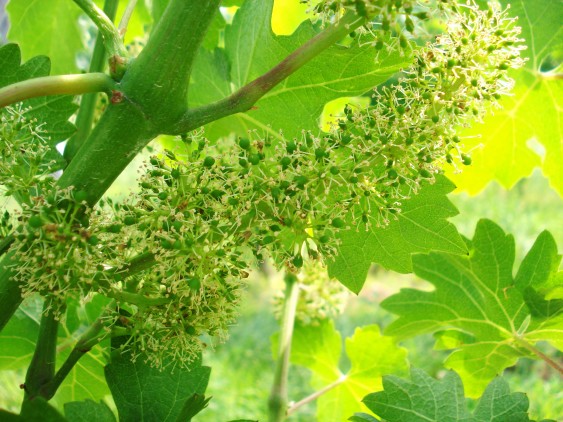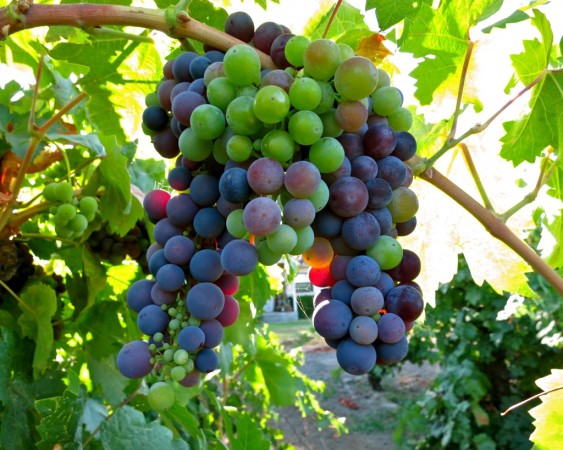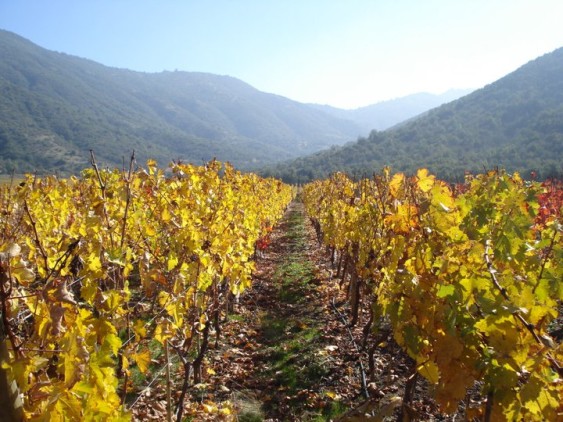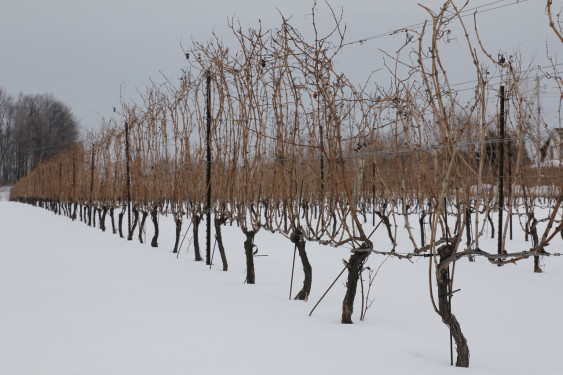We’re all familiar with 12-step programs (no judgment), but when it comes to grapevines, those wily plants are a bit more efficient. They go through eight major phases in an annual life cycle that determine everything from when the clusters of grapes will grow to the exact right moment to harvest them. Here’s what a grapevine goes through every year so that you can enjoy all that palatable plonk.

Grapevines “weep” or “bleed” sap when spring is coming. Photo courtesy of Pegasus Bay.
1. Weeping: This sounds worse than it is, but when you think about it, what’s the first thing you do when you are born? You cry! It’s a sign of life and vigor. The same is true of the grapevines. It means that they are waking up from winter. Many winemakers prune their vines in the winter. When spring hits, the temperatures rise, sap concentrates in the xylem as the vine draws in water from the soil, and then seeps out from the pruned cuttings. Those with a more morbid sensibility call this “bleeding.” You’ll usually see this in February or March in the northern hemisphere.
2. Bud Break: This phase even sounds like springtime, doesn’t it? And though it’s simple, it’s pretty descriptive. With bud break, the grapevine buds begin to…well, break out. You’ll start to see small leaves and shoots appearing off the main vine, and it is along these that the grapes will eventually grow. This is a crucial time for the vine since it is susceptible to spring frosts and mildew. Bud break tends to occur in March-April.

Did you know grapevines actually flower? Photo courtesy of Rominger West Winery.
3. Flowering: As it says, this is when the flowers on the shoots of the grapevines begin to form and are pollinated over a period of a few weeks. Generally occurs in May-June.
4. Fruit Set: The skins, flesh and tannins in the grapes – basically everything that makes a grape a grape – begin to form around June.

When grapes begin to take on their color, it’s called veraison. Photo courtesy of Lodi Wine.
5. Veraison: This is a fancy, French-derived term you might hear thrown around a vineyard from time to time. This is a lovely time to be in the vineyard because it is when the grapes begin to change color and develop to maturity. Vineyard managers are hard at work at this time pruning and trimming the leaves to make sure each cluster of grapes gets just the right amount of sunlight to mature to its full potential. This happens around July-August in most places.

It’ll be time for harvest soon!
6. Harvest: No explanation necessary for what this term means, I think. But there are some interesting facts about grape harvest you might want to keep in mind. Of course it depends on the variety of grape, the climate of the wine region and that year’s weather, but harvest traditionally starts about 100 days after flowering. Harvest generally occurs anytime from August-November, again depending on what you’re growing and where you’re growing it.

Harvest is over and those leaves are about to fall.
7. Leaf Fall: After the grapes are harvested, the leaves begin to turn yellow, orange or red and fall from the grapevines as they start to store up their energy in the roots and trunks for the next year’s growing season and begin to enter dormancy.
8. Dormancy and Pruning: Like bears and other animals, many grapevines go into a period of hibernation during the winter so they can store nutrients and energy in anticipation of the following spring. While this happens, many winegrowers prune the vines and clear the vineyards to prevent any diseases or pests from getting a foothold.

In winter, grapevines go into dormancy to conserve their energy for the following spring’s growing cycle. Photo courtesy of WineDiscovery.ca.
Why bother to know all this? Well, it’ll help you figure out what exactly is going on in the vineyard during your next visit to a winery. And who knows? Throw veraison into the conversation with a winemaker and he or she might actually take you out into the vines to taste the grapes!

